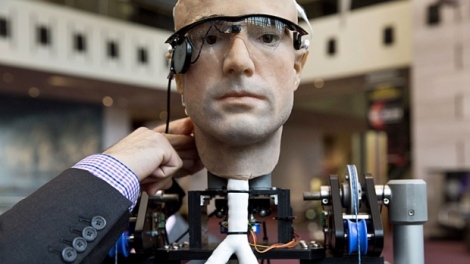The new Robocop movie launches this week and James Cameron painted a bleak future for humans and smart machines but this is the complete opposite of what the potential holds for the Internet of Things.
Cisco told us that there will be 50 billion connected devices on the planet but only late last year Morgan Stanley predicted that number to rise to 75 billion. That doesn’t include some 200+ new device types still to be classified. With smart toothbrushes telling us we’re scrubbing our teeth wrong, smart forks berating our calorie count and smart fridges either ordering the milk or spamming our inboxes you can understand that our once silent consumer toys will soon become a tired cacophony of data noise for us to pay attention to.
But these are not smart machines. Not by a long shot.
Smart machines or smart processes ?
A General Electric turbine generates power but also 500Gb of data a day. It spins all day long but at the same time it’s communicating its state and health to a myriad of systems and processes that monitor it. That data is extremely useful if used in the right way but the machine itself is not considered smart. Now imagine how that machine that can communicate when it could potentially have a critical failure, in advance. Crazy but it’s true. In industrial situations a machine can advise the systems when its likely to fail due to being monitored against performance and tolerance levels. The process can schedule maintenance in advance before the event occurs through the data it’s receiving, but not only this it can tell other turbines to take a spread of the load during the maintenance and then switch back again once the repairs are completed.
To the outside world nothing has happened because it was all seamless. We are nearing an industrial world where the concept of zero downtime could well be a reality.
And this is nothing to fear.
Some smart things a day keep the doctors away
Google Glasses and wearable technology represent a massive shift in citizens harnessing the data they generate for their own use. Imagine taking constant readings from a Jawbone Up or Nike Fuelband and having them delivered to your doctor ? If you’re being treated for smoking, cancer, recovering from an operation and you deviate from your prescribed healthcare then your doctor can immediately get in contact and find out why. Imagine the reduction in strain on an overloaded healthcare system if you can catch and treat symptoms before they become problematic. I know one pharmaceutical company who is developing on Google Glass for hospital use, for consultants and doctors doing the rounds to wear them, scan bar or QR codes at a patient door and instantly be fed the right medical information about them, the treatment required, procedures like wearing gloves and masks, even down to scanning the dosage before it’s been administered. Everything is recorded and traced back to the patient’s medical records and hospital’s automated processes.
Again, this connectivity and ability to use machine (or thing!) generated information is nothing to fear.
Connecting the dots (and things)
Fonterra, who are responsible for more than one-third of the world’s international dairy trade created a solution where containers were tracked from the pack plants through departure ports, transship ports, to the destination port, and on through to either warehouse or customer delivery. All container tracking events were received in real-time so business operations were alerted when events did not occur as expected, for example, if containers were left behind at transhipment ports, or incorrect quantities are received. It allowed them to monitor processes and manage costs to the tune of millions of dollars far better than they had ever done previously.
We’ve conducted research ourselves by placing RFID transponders on maritime containers to allow us to fully automate a manual container identification process by using transponder readings to link to the business processes, thereby accelerating transhipment processes and making transhipment a more effective and efficient component of container logistics.
And not a Terminator in sight yet.
Skynet is real but it’s the good guy
The way we think about business and data in a world where machines and things are considered smart is changing, connectivity will spur the next revolution where analytics and big data will give us insight we never had before. Stand alone monolithic systems are the past, it’s now about the integration, analytics and using data generated for meaningful purpose.
Machines aren’t smart no matter how much we allude them to their Hollywood cousins. The smart comes from what we can do with the information those machines are telling us.



